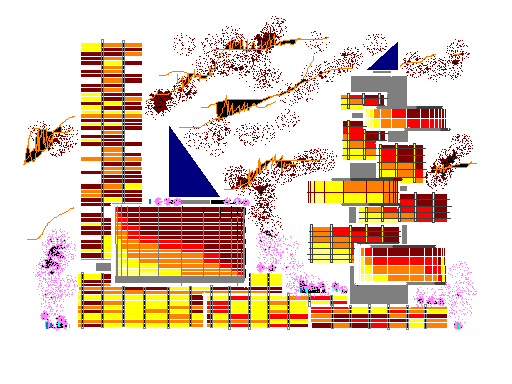|
Study on High Net Worth Individuals Reveals Interesting Math Stephen Chung Managing DirectorZeppelin Real Estate Analysis LimitedNovember 2006
We have reviewed briefly the recent study done by Cap Gemini and Merrill Lynch on global high net worth individuals (HNWI), defined as individuals with US$1M or more in financial assets not counting his or her residence. Reportedly, there are now some 8,700,000 HNWI and they own a total of US$33,300,000,000,000 or approximately US$3,800,000 each. Readers interested in obtaining a copy of the study may wish to visit this webpage: http://www.capgemini.com/resources/thought_leadership/2006_world_wealth_report/ Toward the end of the study, 9 of the countries investigated have been selected for comparison in terms of the number of HNWI which they have and the growth rates from 2004 to 2005. These countries and their numbers of HNWI are listed below:
We have out of curiosity collected via the web the respective population (2005) and household (mostly late 90s to early 00s except for the estimated China figure) figures on these 9 countries as follows:
And the percentages of HNWI over the population and household figures for each of the selected 9 countries are:
As anticipated, developed countries such as the USA and the UK tend to have significantly higher percentages of HNWI than developing countries such as China and India, notwithstanding China percentages are (more than) double of those of India. Very roughly and on a household basis, around 2% of households in the developed countries have a HNWI. We have also collected the 2005 nominal GDP (Gross Domestic Product) in US$ on each of the 9 countries via Wikipedia:
In general, one would expect that countries with higher GDPs per capita would have higher percentages of HNWI and vice versa, i.e. say a country with US$10,000 GDP per capita would have more or less double the HNWI percentage over say another country with only US$5,000 GDP per capita given all things being equal. Thus, using the USA’s data as based (100%), we have compared the other 8 countries’ GDP per capita, % of HNWI to population, and % of HNWI to households and these are the results:
Based on the foregoing, it can be seen that by and large, with the exception of Russia, the other countries’ GDP per capita and their % HNWI to population and / or % HNWI to households are quite correlated. For instance, the UK’s set of figures are quite in line compared to those of the USA, with all being in the 80%+ range. Likewise, developing economies such as China and India’s GDP per capita and % HNWI to households (if not their % HNWI to population) are in line when compared to the USA. However, Russia’s percentages HNWI to both population and households are below its GDP per capita when compared to the USA. What implications this may have is best left to economists and statisticians though it appears the wealth concentration in Russia may be quite / more skewed than the other economies. Also, if one is optimistic of the economic development of emerging countries such as China and India, then one should expect their numbers of HNWI to grow in line with their GDPs per capita, in particular when their population and household bases are huge to begin with. A very crude example below: a) Say we use the HNWI figure for the USA to 2,700,000 or around 0.90% of population b) Say for China to reach this same number of HNWI, this means around 0.20% of population c) 0.20% / 0.90% = around 22% d) Roughly China needs only to have 22% of USA’s GDP per capita to achieve a similar number of HNWI = US$42,000 x 22.64% = US$9,240 While this US$9,240 figure seems quite a distance from the current China GDP per capita of US$1,709, this may not feel so remote IF one looks forward to having only 1/3 of the HNWI figure which the USA has, which implies a GDP per capita of only around US$3,200, which in turn seems quite possible in the not too far distance given China’s relatively high rate of GDP growth. Notes: The article and/or content contained herein are for general reference only and are not meant to substitute for proper professional advice and/or due diligence. The author(s) and Zeppelin, including its staff, associates, consultants, executives and the like do not accept any responsibility or liability for losses, damages, claims and the like arising out of the use or reference to the content contained herein. |
||||||||||||||||||||||||||||||||||||||||||||||||||||||||||||||||||||||||||||||||||||||||||||||||||||||||||||||||||||||||||||||||||||||||||||||||
Phone (852) 37576388 Fax (852) 37576399 E-mail contact@real-estate-tech.com
Address c/o Zeppelin, Unit 1007, 10/F, CCT Telecom Building, 11 Wo Shing Street, Shatin, NT, Hong Kong
Copyright rests with Zeppelin and/or relevant authors
